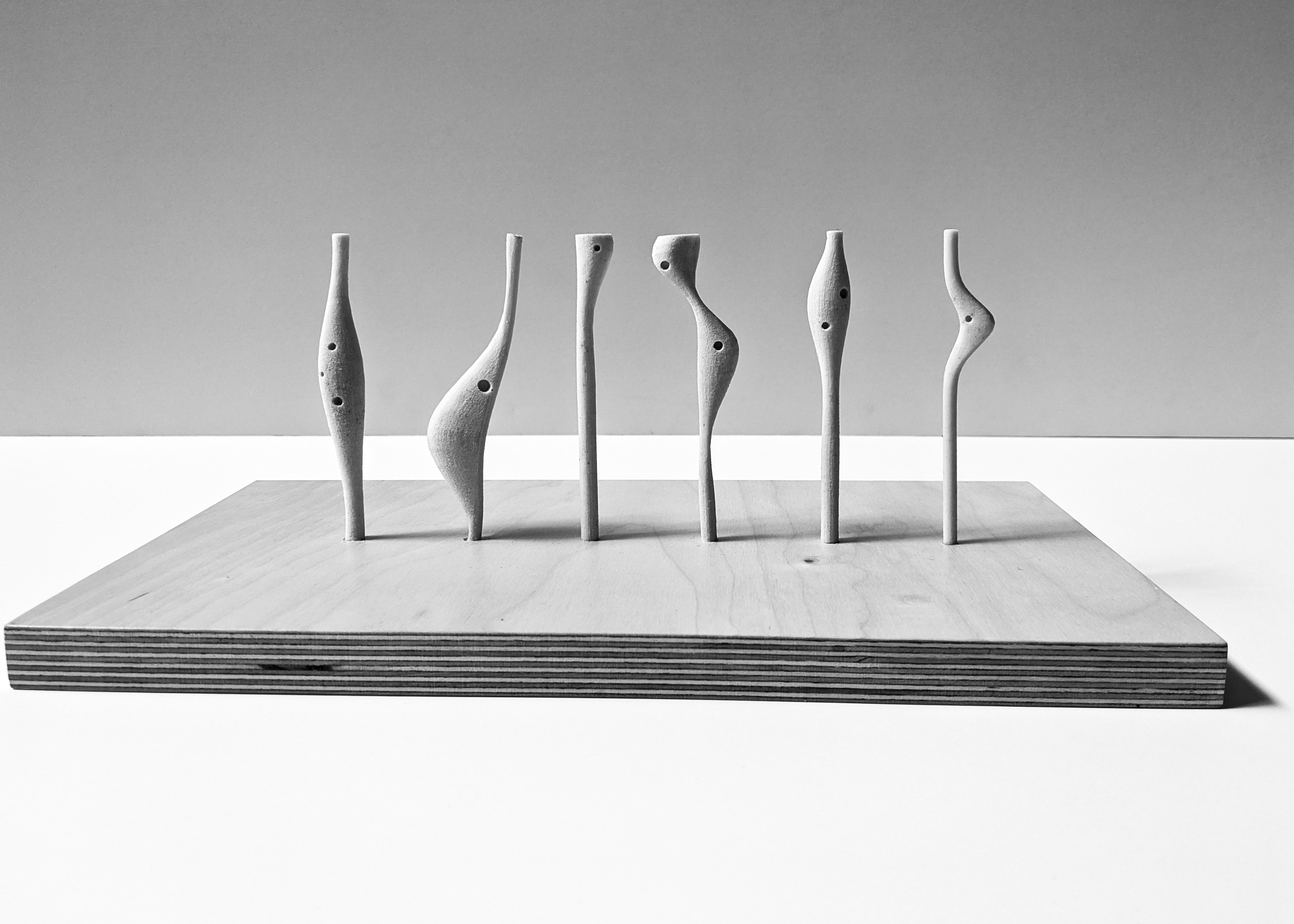
Joshua Bauman, Lauren McLachlan, "Railway // Ravine"
Students in LAN2014 were tasked with designing a southern extension for the West Toronto Railpath, a public walking and cycling trail that runs alongside an active railway corridor in the city's west end. Early on, Joshua and Lauren made an observation that shaped their entire project: rail corridors, which are prolific across Toronto, could expand the ecological network of the city.
"You start to see this correlation between these narrow, sinuous corridors," Joshua says. "What if we allow for the expansion and proliferation of the ecological functions that these infrastructural corridors can also serve?"
They decided to focus on creating an environment that would emphasize the ecological needs of Toronto’s native animal species. Because the margins of an active rail corridor aren't ideally suited to wildlife, they incorporated manmade animal habitats.
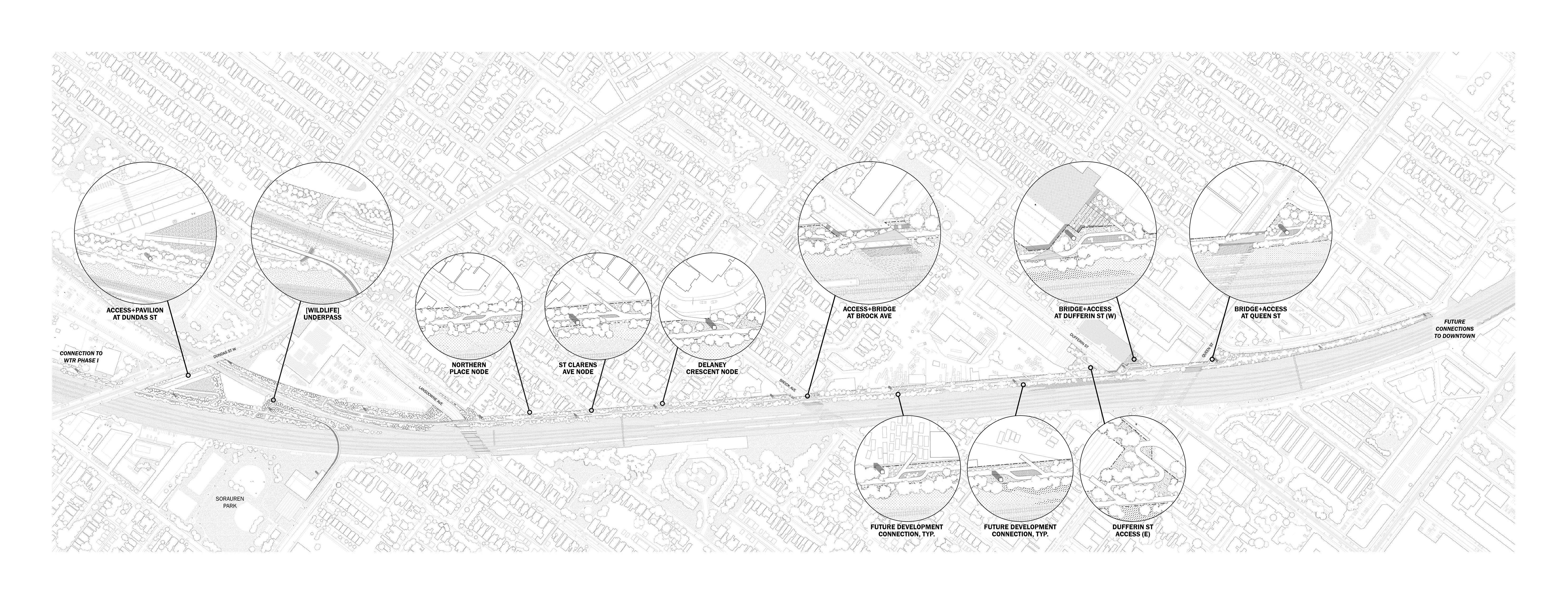
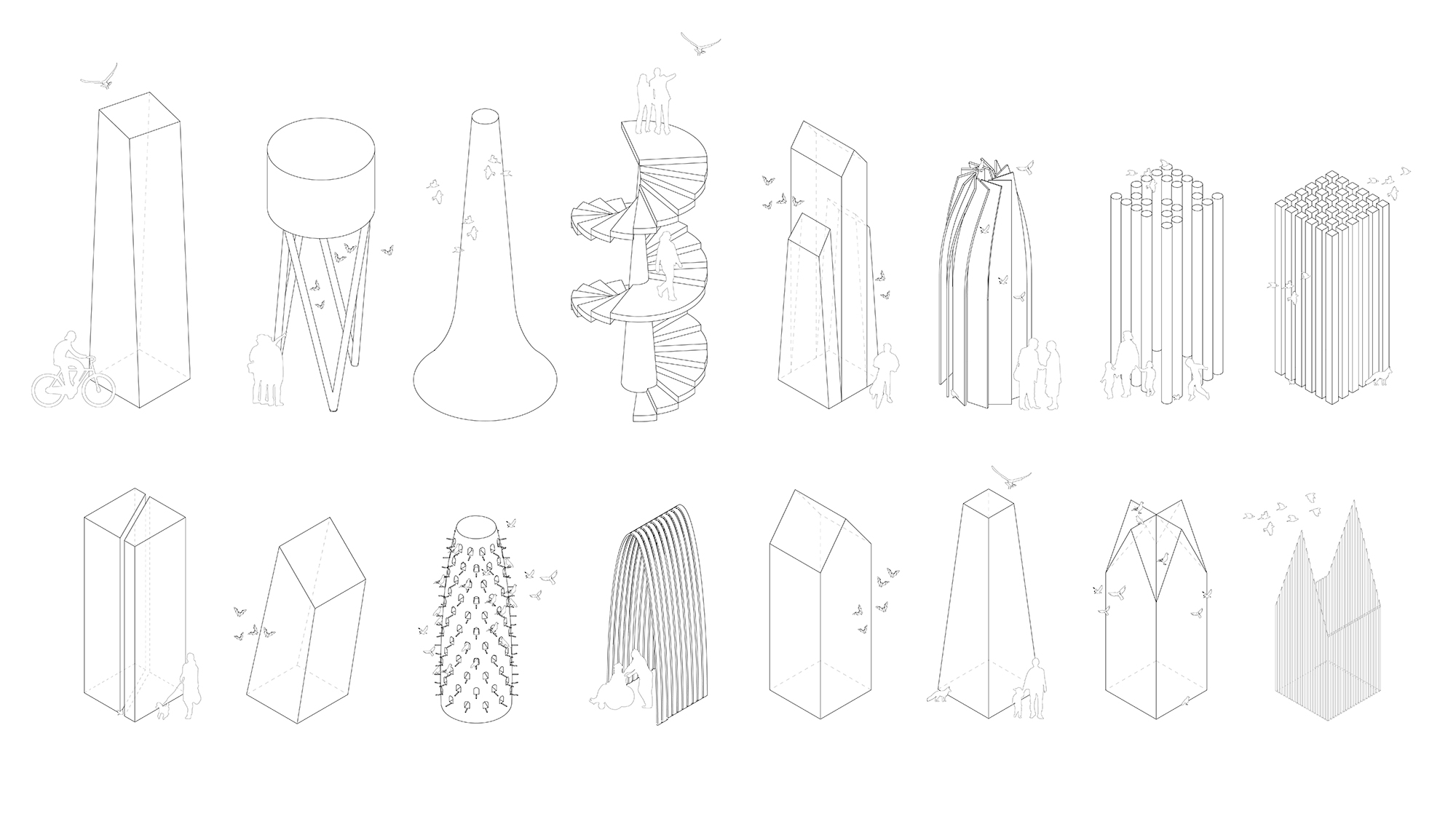
Top: Joshua and Lauren's master plan. Bottom: A catalogue of their artificial animal habitats.
They added habitat structures at regular intervals along the Railpath extension. The artificial habitats are designed to support wildlife regardless of season or the state of nearby vegetation. Different structures are tailored to the needs of communally nesting birds, urban bat species, and other small animals. For territorial birds, Joshua and Lauren designed a series of sculptural, “single-family” birdhouses.
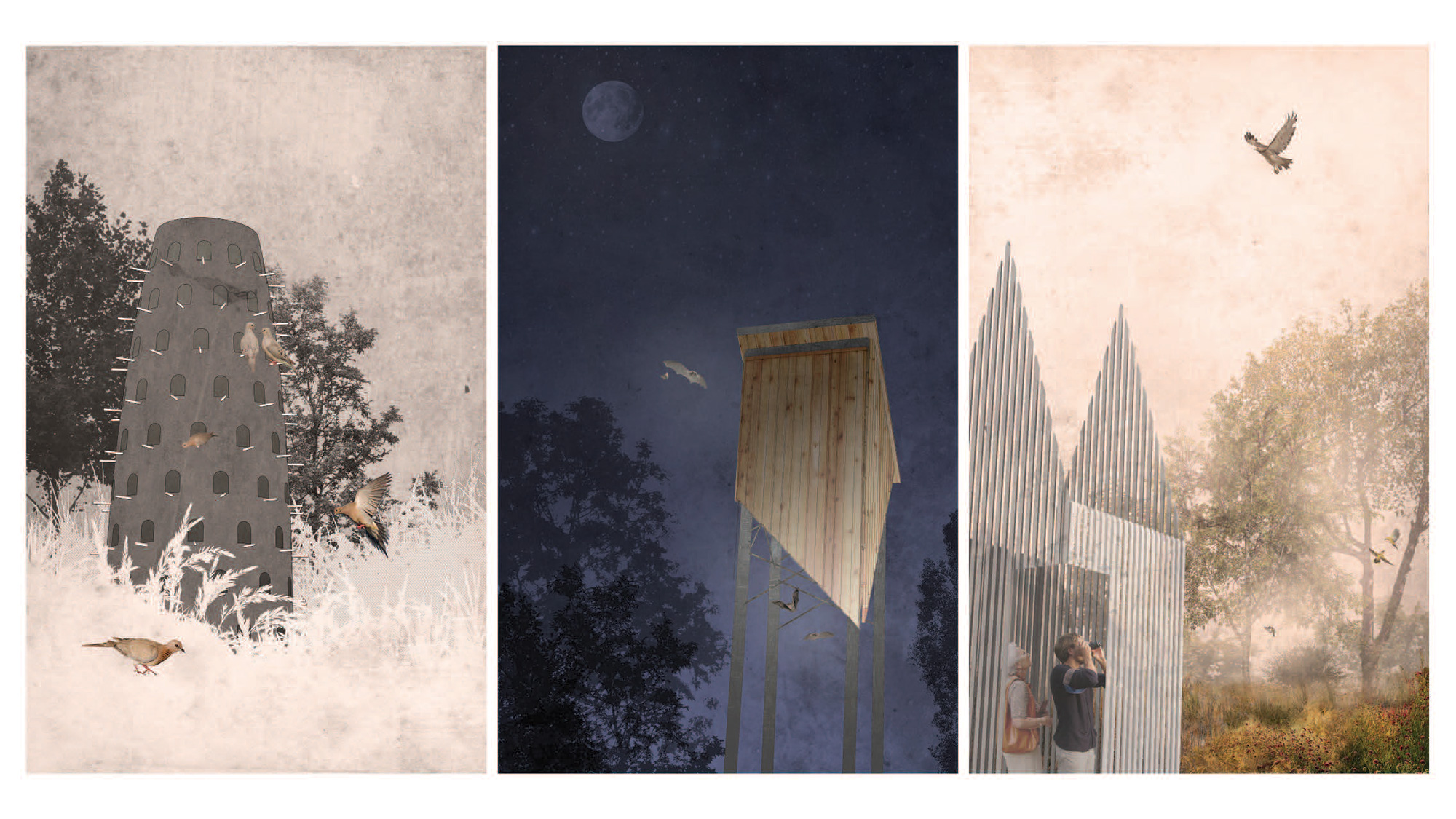
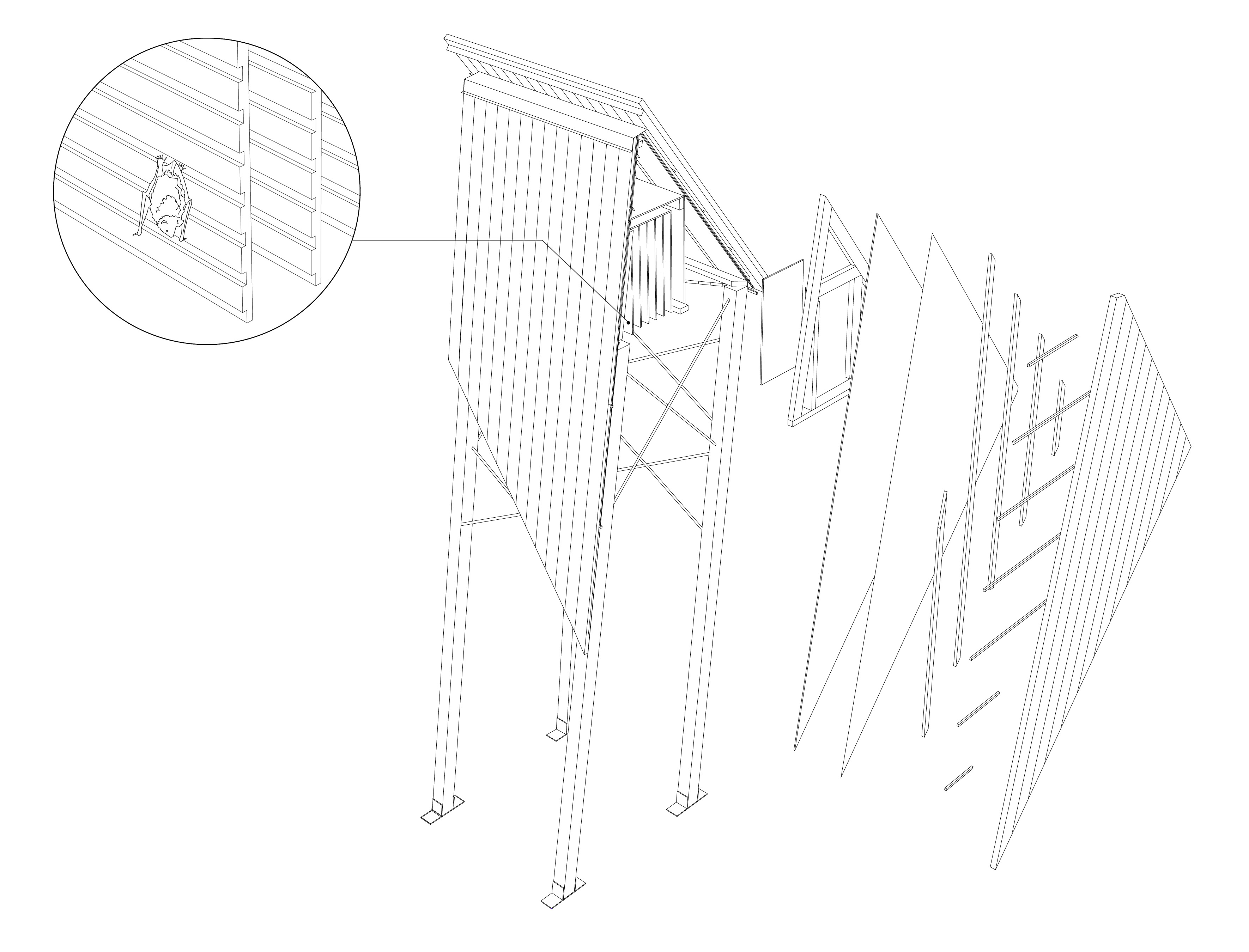
Top: Examples of habitats for communal birds (left) and bats (centre), as well as an animal-viewing blind for human visitors (right). Bottom: The inner workings of a bat house.
For the little brown bat (Myotis lucifugus), a species that is being displaced by redevelopment activities, Joshua and Lauren provided bat houses. The structures are tall, so that bats can fly in from below. The interiors ensure optimal humidity and ventilation, with hanging combs for the bats to rest upon.
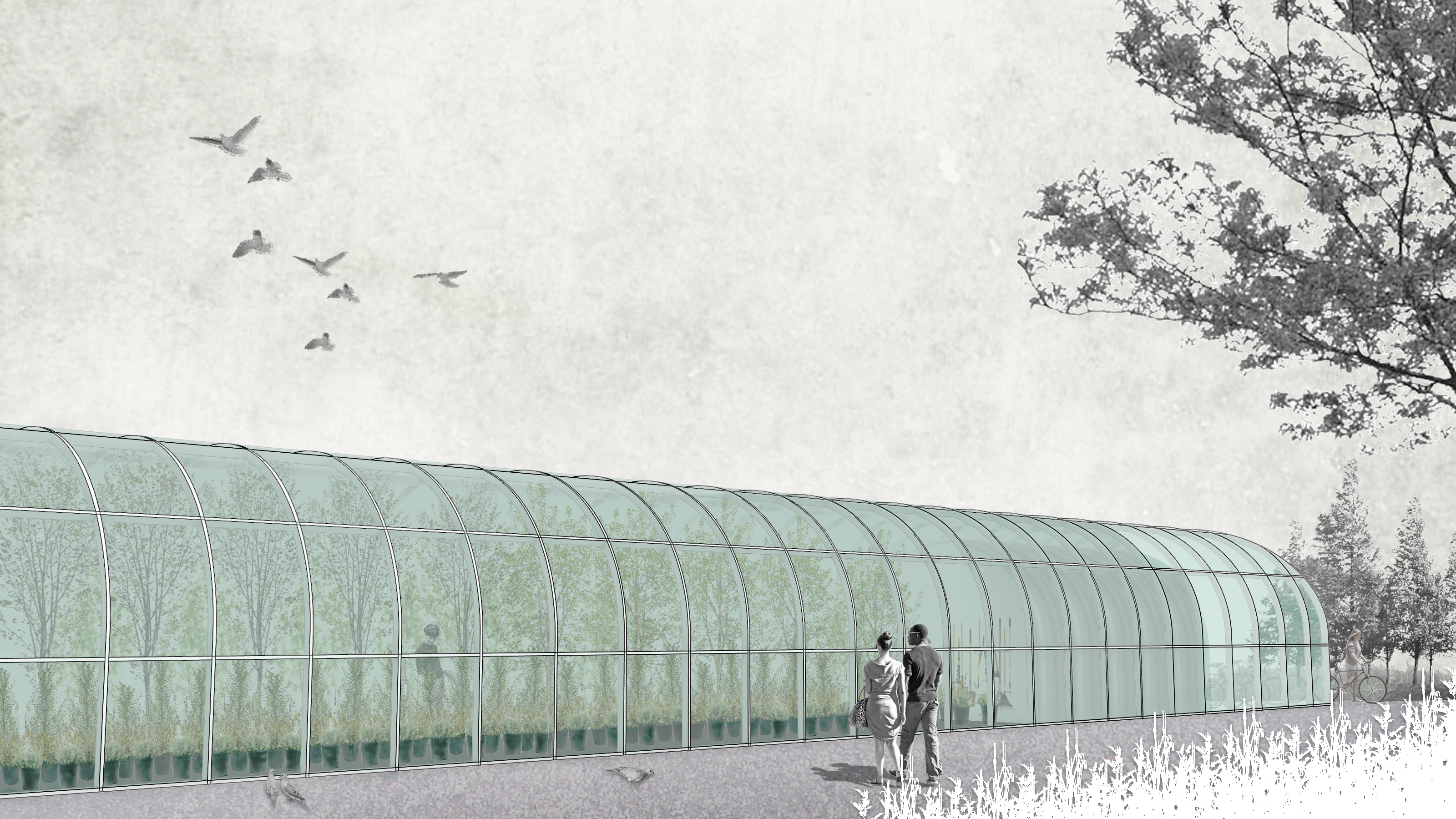

Top: The multi-use greenhouse pavilion. Bottom: Joshua and Lauren's elevation-dependent planting strategy.
At Dundas Street, a wider segment of the rail corridor allows for greater activity and intensity of planting. Here, Joshua and Lauren positioned a multi-functional pavilion that acts as both a human respite and a greenhouse that produces seeds for use in revegetating the site.
Joshua and Lauren’s planting plan first considered the rehabilitation of the soil with pioneer species and hyperaccumulators to remove pollutants. Their next phase would establish an elevational hierarchy on the site, with meadow species inhabiting the high points and vegetative communities transitioning down to the low points where wet woodland species would thrive and help to filter the stormwater runoff along the site. This great variety of plant communities would provide ample diversity to support many different animal species.
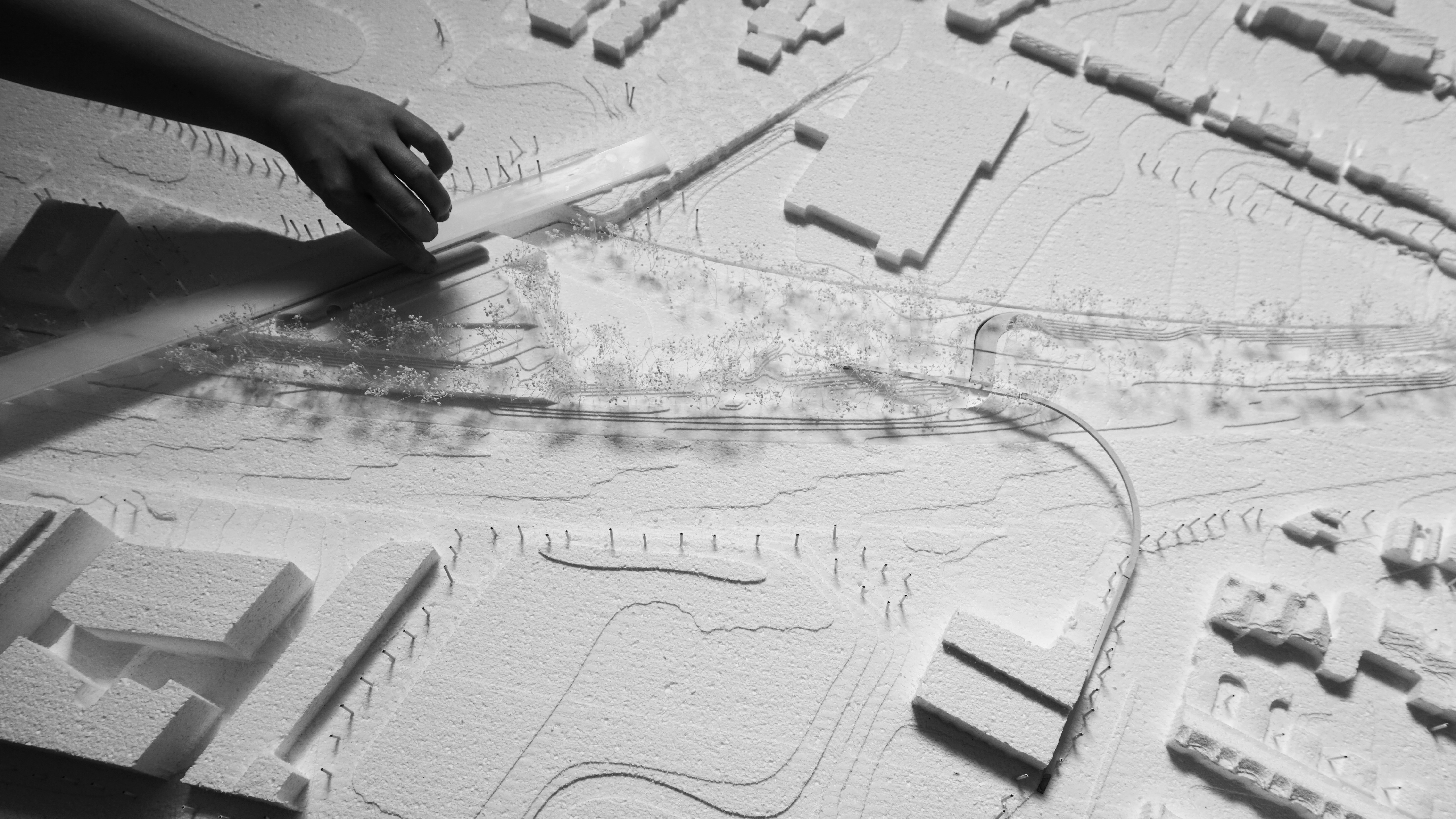
A site model of Joshua and Lauren's Dundas Street node.
Joshua and Lauren's proposal challenges the perceptions of urban wildlife by intentionally emphasizing animal habitats and encouraging ecological functions to dominate this otherwise anthropocentric corridor. It's a strategy that could be repeated along other railway corridors and other infrastructural corridors in Toronto and beyond.
Instructor: Behnaz Assadi

